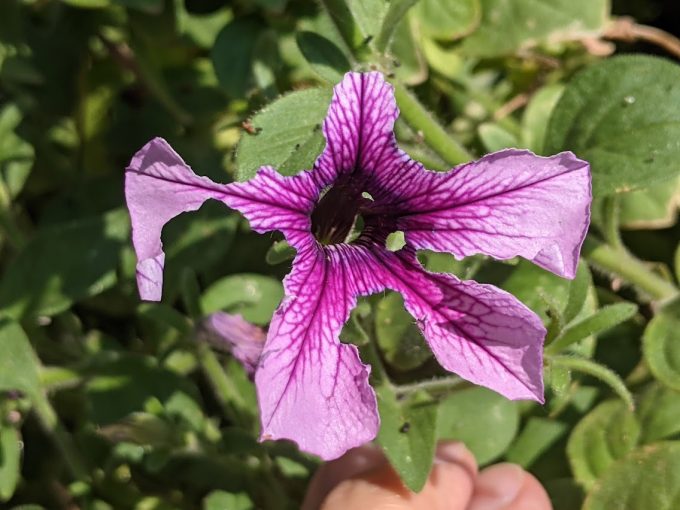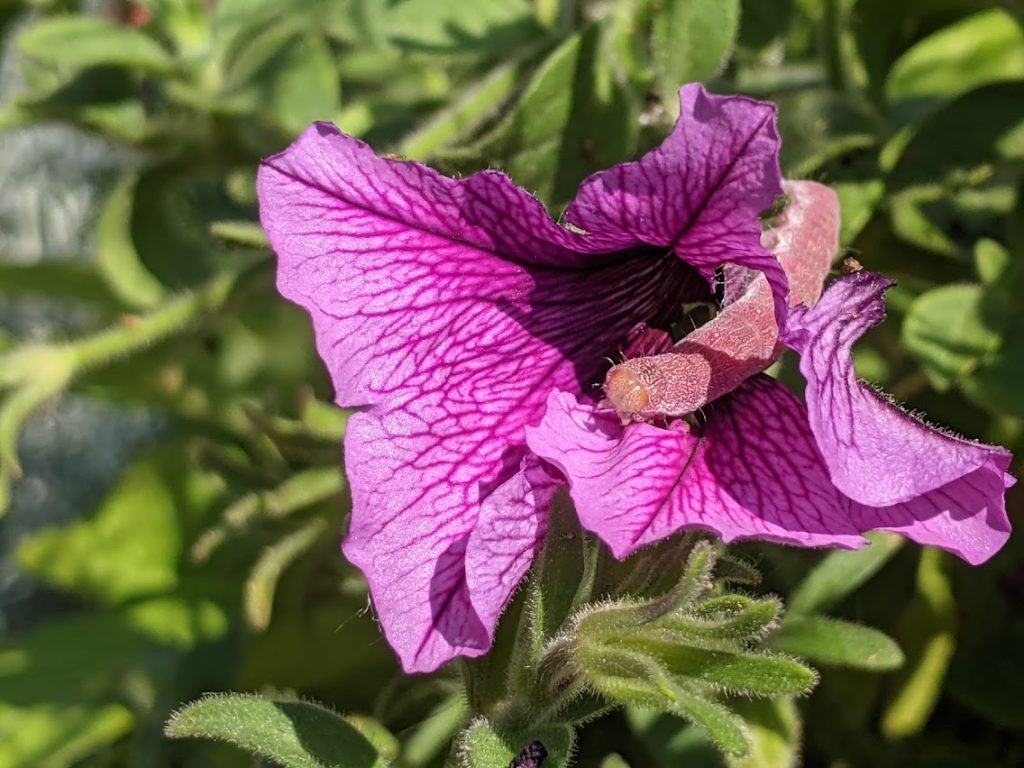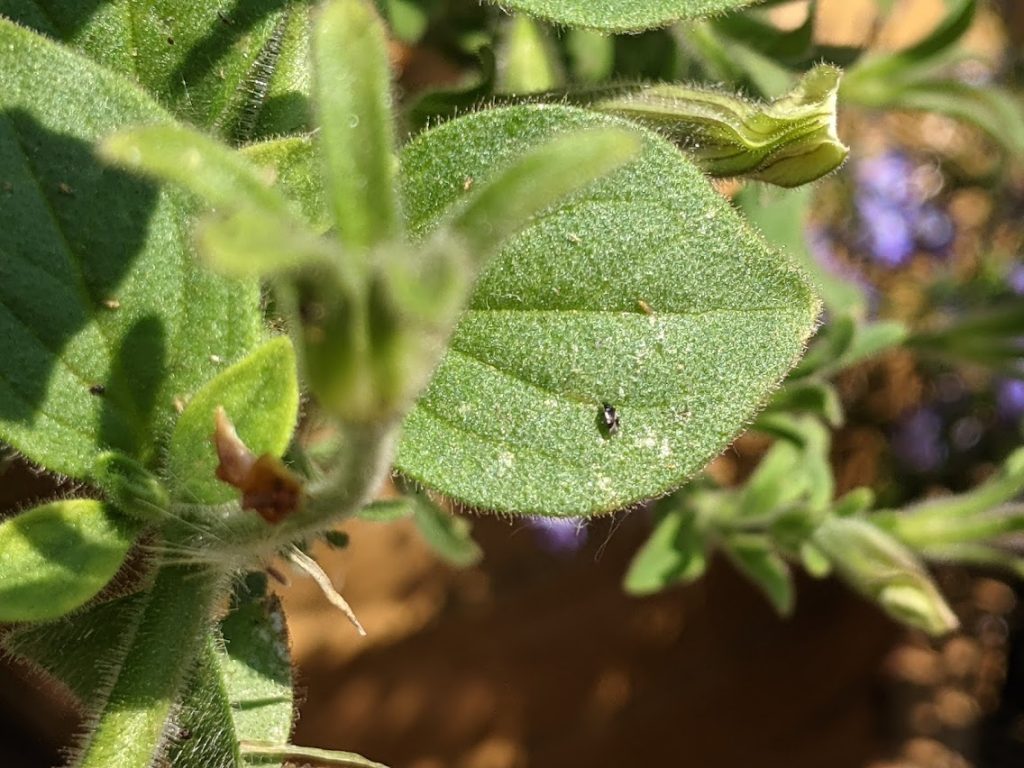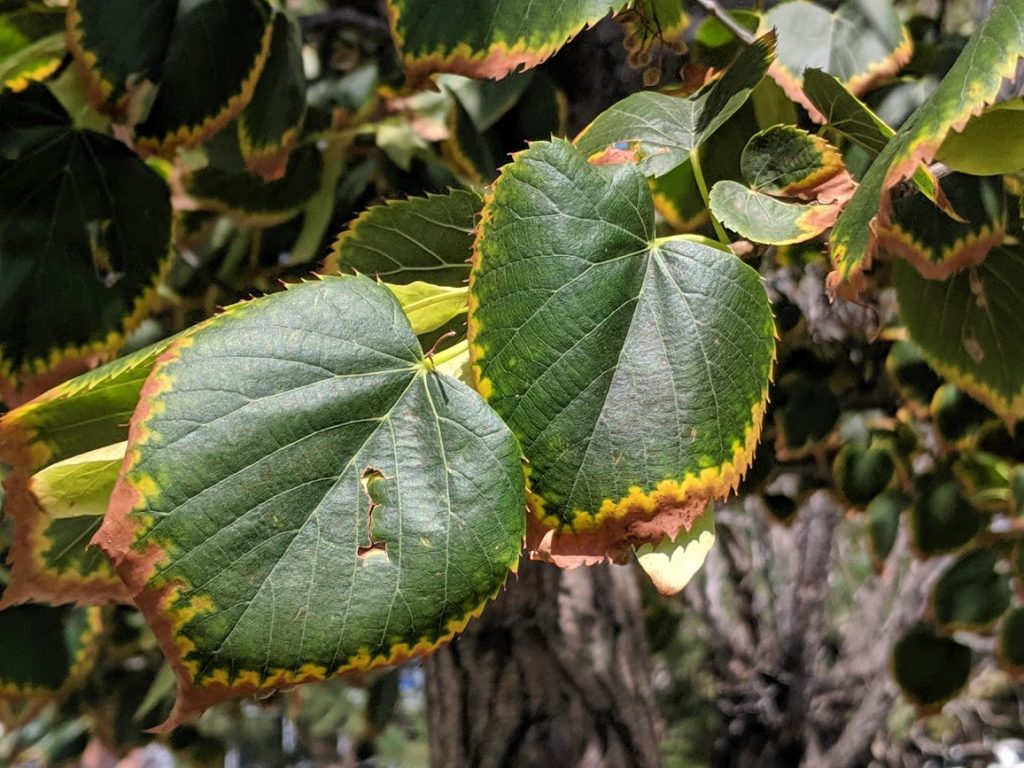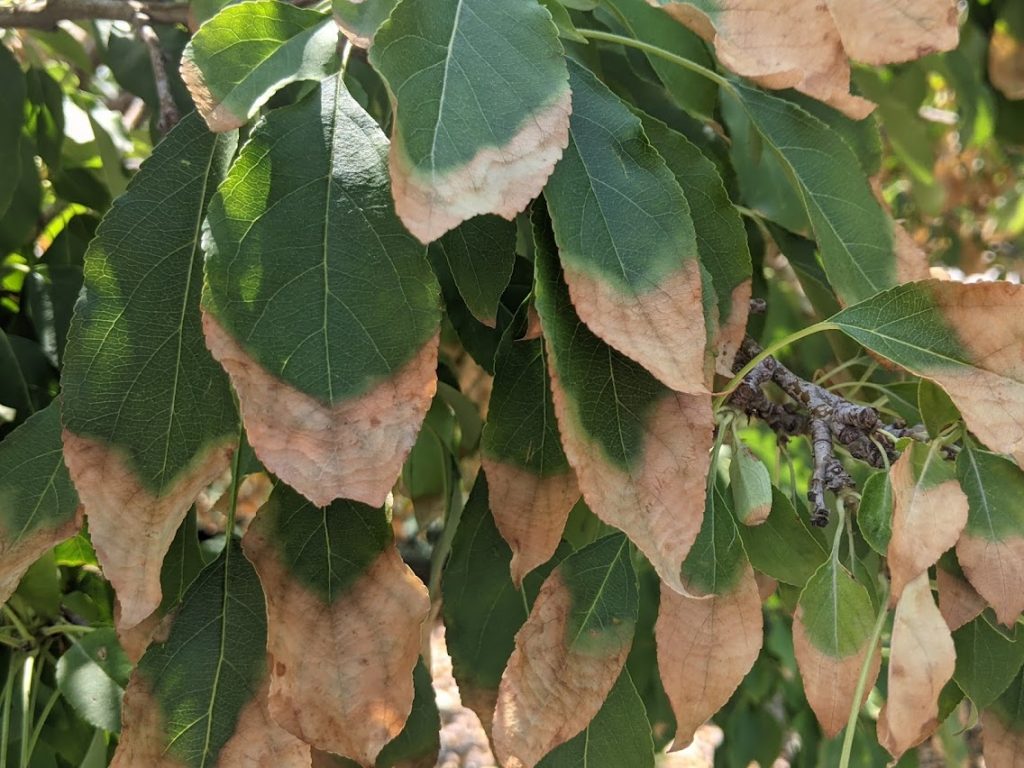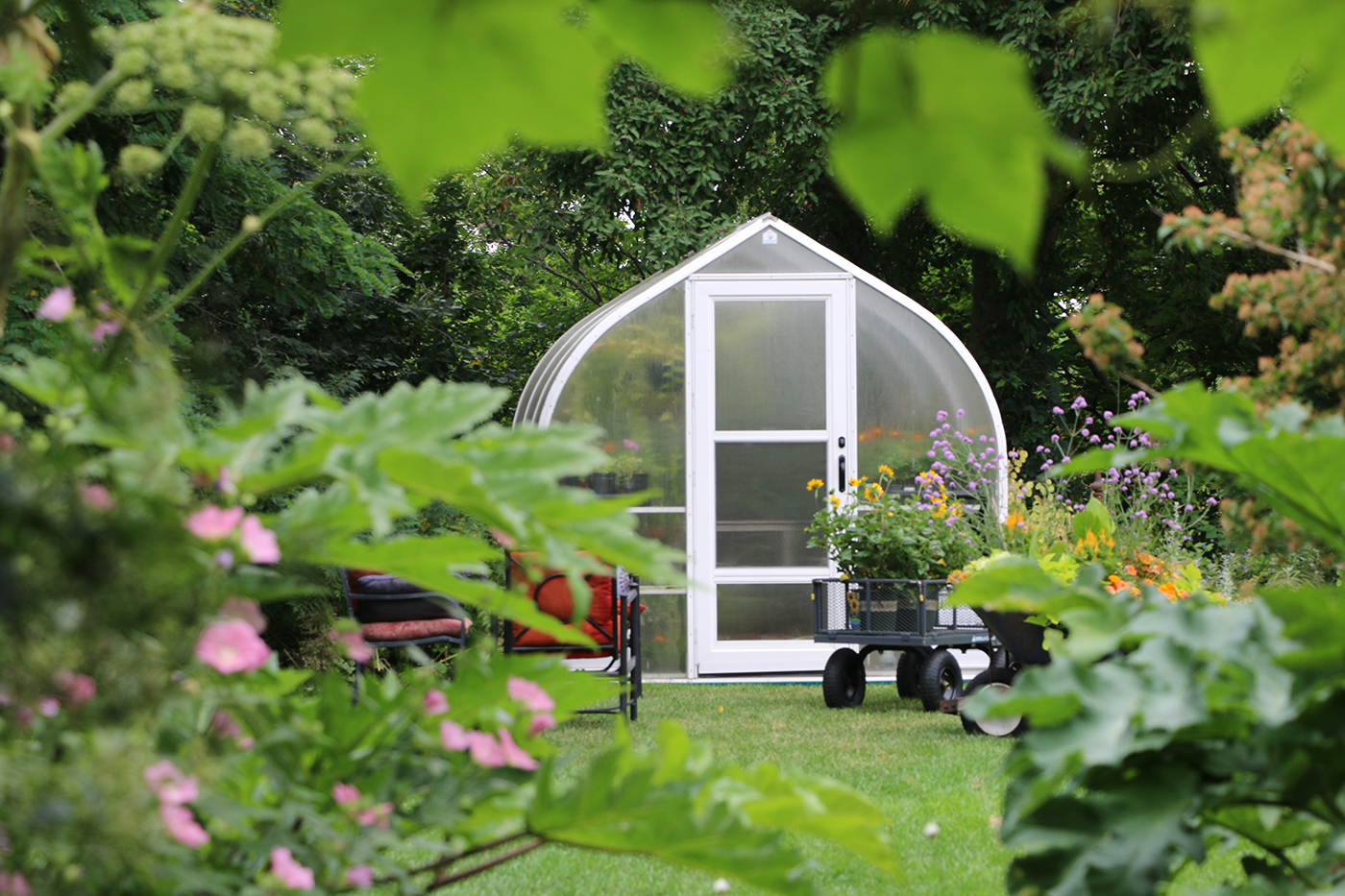Are our summer heatwave and the smoke from the forest fires in the Pacific Northwest prompting you to spend a little less time outdoors this summer? That’s my excuse for not keeping as close an eye on my yard and garden as I usually do. So now, I’m playing catch-up on some very basic TLC I should have been giving my plant all along.
Let’s look at what I’m seeing in my own landscape, and when I’m out and about, too.
Starting with a tiny critter and its big appetite
Blink and the blossoms of your geraniums, petunias, or nicotiana might go from lovely to tattered overnight. Geranium budworm, a.k.a. tobacco budworm, are truly eating machines. Fortunately (or unfortunately) their damage is quite obvious if we just make it a point to look at our gardens on a regular basis. By spending a bit too much time indoors, the budworm invasion got ahead of me.
Since he was out at high noon, I guess this guy didn’t know that his kind is supposed to be active mostly at night. And to top it of, he was a beast! The longest one I’d ever seen! Easily two inches long when he stretched out to move! Yikes!
Geranium budworms go for camouflage, often taking on the color of the flowers they’re eating… sometimes a bit purplish, like this one on a pinkish-purple petunia. They can also be brown or lime green. It came as quite the surprise when I was deadheading (our next topic) and spotted him chomping his way through the flower!
Geranium budworm damage can look a bit different when the target is a geranium flower rather than a petunia.
If we take a close look at clusters of geranium buds, the budworms’ entry holes are hard to miss. We should also watch for “frass,” the caterpillar’s droppings on the leaves beneath the flowers.
One little “pellet” is unusual. When the budworms are well established, you’ll often see lots of deposits on a single leaf.
So how do we fight back?
Tagawa’s sells several effective treatments that can stop budworms in their tracks. Organic options include “Bt,” often sold as “Dipel,” and Thuricide. All will shut down the caterpillar’s digestive system without harming other wildlife. “Captain Jack’s Dead Bug Brew,” one of my own go-to pesticides, is another organic option. Tagawa’s also carries a new organic product called “Bee Safe.” For a synthetic treatment, “Eight” can be very effective, but it needs to be used with the honey bees in mind. If you choose to use Eight, trim off all blossoms before you spray.
All of these pesticides should be used exactly according to label directions. In an abundance of caution, it’s best to use them just after dusk, when all the honey bees have gone home for the evening. Our Garden Advisors at Dick’s Corner will be happy to help you decide which approach is best for your situation.
Deadheading… removing old blossoms as they fail
It was as I was trying to catch up on my neglected deadheading chores that I came face to face with Mr. Budworm, featured above.
Deadheading is important for a consistent show of flowers, and here’s why. A flowering plant’s primary mission is to make seeds. When that seed is finished, the plant will usually slow down or stop putting on flowers altogether. Job done, right?
If we’re persistent at removing the fading and faded blossoms, we can push the plant to make more flowers. We’re tricking it into blooming again and again. Fewer seeds = more flowers.
Deadheading isn’t hard, but it needs to be done right to keep the plants looking their best. Unless you especially want the seed head a plant creates, dill seed, for example, remove flower blossoms just as soon as they’re past their prime. The longer the faded blossoms stay in place, the more energy they spend trying to make seeds.
As a general rule of thumb, don’t just cut off the blossom and leave part of the stem.
The stems on my cosmos shouldn’t be left like this. The stems need to be cut back to a leaf node since that’s where the next bud is going to emerge. Leaving leftover stems that are clearly visible just looks sloppy.
As you’re deadheading, don’t be afraid to give your sprawling and overgrown annuals or perennials a good haircut. They may look a bit hard-hit for a week or two, but in the long run, they’ll come back stronger and quite often ready to put on a new flush of growth.
Feed me!
I grow all of my annuals in pots … lots and lots of pots. Even with great soil, any plants growing in containers eventually need supplemental nutrients. If they don’t get that extra boost, they don’t necessarily die, but they sure do pout. A few of my container gardens are just about there. This pot of callibrachoa is shouting out for food!
There’s are lots of top-quality plant foods on the market. Tagawa’s carries enough varieties to make your head spin! When I ask among the staff which products they use at home, I rarely get the same answer twice. The important thing is to use what’s convenient for you and appropriate for your plants. Follow the directions on the package to the letter, and you’ll be helping to ensure a great flower show all season long.
And then there’s leaf scorch
I’m not at all surprised to see these patterns showing up on the leaves of trees and shrubs along the Front Range. Given the heat and the hit-or-miss rains, when there’s any rain at all, the kind of damage on neglected trees and shrubs is almost a given.
Leaf scorch can look like some fancy variegated pattern, as seen above, or it can appear as if the edges of leaves have simply turned to parchment, which is pretty much what they’ve done.
Leaf scorch is all about the water the roots are receiving. When the water isn’t there, the tree or shrub can’t keep the outermost tips or edges of leaves from dying.
Thankfully, I don’t have this type of damage in my own yard, but I am seeing it on plantings in lots of commercial properties that clearly don’t get any TLC when drought conditions set it.
Trees and shrubs generally won’t die simply because they develop scorched leaves for a year or two. But unless those plants begin to get better care, long-term drought stress could mean the trees’ and shrubs’ days are numbered.
If trees or shrubs in your home or business show this damage, take pictures with your smartphone and bring them to Tagawa Gardens. Then, stop by the Garden Advisors at Dick’s Corner for guidance on how to bring them back.
And I promise…
…that heat or no heat, smoky skies or not, I will try very hard to be better with the TLC for my own plants in the future. Feel free to hold me to that!!
And here’s hoping we see you at Tagawa Gardens soon!
